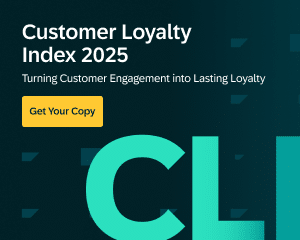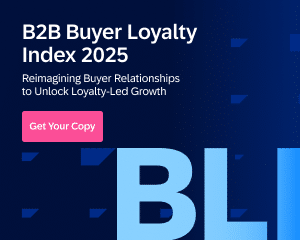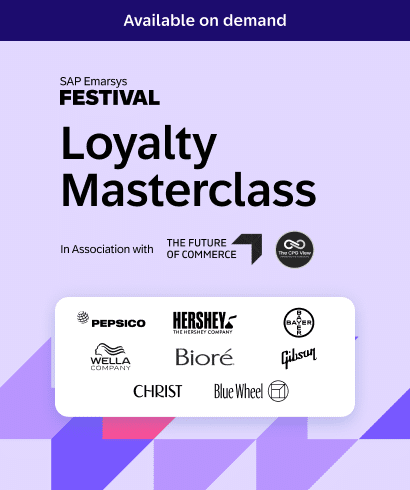Upgrading your email segmentation strategy might sound complicated—but in reality, it can save you time, sharpen your targeting, and drive better results.
Think about it. Your team is sitting on a goldmine of customer data but struggling to turn insights into action. While competitors stick to basic demographic splits and first-name personalization, you have the opportunity to leap ahead.
Ask yourself:
- Are your segments adapting as customer behavior changes?
- Are you connecting insights from across all channels?
- Can you predict what customers might need next?
If not, it’s time to move beyond surface-level segmentation and start marketing smarter.
The Business Case for Smarter Segmentation
AI and machine learning have redefined what’s possible for email marketing. Traditional segmentation—manual rules, static customer groups—isn’t enough anymore.
Advanced strategies use predictive analytics to spot patterns, segment customers based on real-time behavior, and constantly evolve. And the results speak for themselves:
- Marketers who advanced their segmentation strategies report a 760% increase in revenue. (Campaign Monitor)
- 80% of consumers are more likely to purchase from brands that deliver curated experiences. (Epsilon)
Poor segmentation doesn’t just miss opportunities—it can also trigger spam filters, damage your sender reputation, and waste marketing budgets.
“Customers these days are expecting that brands they interact with and are willing to accept communications from know them on an individual level. It's not enough now to send to everybody. It needs to be at a personal level.”
Mastering advanced segmentation isn’t just nice to have. It’s a competitive advantage that boosts engagement, protects deliverability, and drives growth.
5 Email Segmentation Strategies That Deliver Real Results
Let’s take a look at 5 smart email segmentation strategies used by leading brands to target their customers more effectively and deliver hyper-relevant content:
1. Enliven engagement with dynamic scoring
Still relying on static lists? That’s a one-way ticket to outdated data.
Dynamic engagement scoring adjusts segments based on how customers behave across channels—in real time.
How to implement it:
- Build a scoring model weighing opens, clicks, purchases, site visits, and more.
- Define thresholds from highly engaged to at-risk.
- Automate segment moves when scores change.
- Customize content and send rates by engagement level.
Sophisticated marketers go beyond opens and clicks, factoring in browsing patterns and purchase intent to predict buying behavior.
“We try to look at basically all the data points that we have as soon as we have them. We’re working very closely with our machine learning team to have some real-time personalization modeling that we can use.”
2. Never miss the moment with real-time triggers
Batch-and-blast emails feel impersonal. Real-time triggered segmentation taps into customer signals when they’re most likely to engage.
Instead of treating every cart abandonment the same, advanced segmentation considers:
- First-time vs. serial abandoners.
- High-value vs. casual browsers.
- Product-specific interest patterns.
- Technical errors like checkout failures.
Context matters. The best triggers account for communication preferences and history—keeping messages relevant without overwhelming your audience.
"A lot of our messages by now are also triggered by user interaction. So it was either someone completes a course, or someone reviewed a vocabulary item, or someone hasn't done so in a while, also sort of an absence of a trigger."
3. Predict your customers’ needs—before they do
Why just react to past behaviors when you can anticipate future needs?
Predictive segmentation identifies hidden patterns in your customer data to deliver exactly what they want—before they even realize it themselves.
Building predictive segments starts with a few essential steps:
- First, aggregate historical purchase and engagement data across channels.
- Then, identify key signals that mark critical lifecycle transitions, such as a first-time purchase or declining website visits.
- Next, model probability scores around key behaviors—like likelihood to purchase within a timeframe, risk of churn, next likely product category, or optimal timing for replenishment.
- Finally, set up workflows that automatically deliver content, offers, or nudges based on these predictions.
For example, instead of scrambling to win back a customer after a cancellation, predictive segmentation spots the early warning signs—and engages them proactively with messaging tailored to their situation.
Over time, predictive segments fuel sophisticated lifecycle marketing programs, using automation to deliver relevant, targeted customer experiences at every stage of the journey.
Wondering if your current setup can support predictive analytics? Request a no-commitment assessment from SAP Emarsys to evaluate your readiness.
4. Break silos with cross-channel cohort segmentation
Channel isolation leads to fragmented experiences. Cross-channel cohort segmentation pulls together customer behavior from multiple touchpoints to create a unified view.
You can build powerful cohorts like:
- Email non-responders active on your app.
- Social media enthusiasts who browse but don’t buy.
- In-store shoppers who window-shop online.
- Multichannel customers with channel-specific preferences.
Cross-channel insights allow you to meet customers where they are—with personalized, connected messaging.
“Email is still our main channel, and whoever has opted in to receive email will receive an email from us sooner or later. It's the most versatile one... But we started using mobile messaging more and more. Push notifications, especially for learning nudges, converted 50 percent better than email.”
5. Win trust with privacy-first personalization
As privacy regulations tighten, your segmentation strategy must balance personalization with respect for customer data.
Techniques to prioritize privacy:
- Cohort-based segmentation without individual tracking.
- On-device personalization to protect sensitive data.
- Content affinity models built from observed behavior.
- Transparent, preference-based segmentation.
Focus on zero-party and first-party data—what customers willingly share or demonstrate—rather than third-party purchases. The result? Personalization that feels respectful, not intrusive.
Brands That Found Success with Advanced Segmentation
Next up, let’s take a look at some examples of brands who are leveraging segmentation to drive impressive results:
Babbel: Turning intent into revenue

Facing explosive growth—200% year-over-year in Europe and 100% in the U.S.—Babbel needed a way to scale intelligently without sacrificing personalization.
To meet this challenge, the team developed a segmentation strategy focused on four key areas:
- Intent-based segmentation, grouping users by their motivation and learning goals.
- Channel-preference profiling to deliver messages through each user’s preferred medium.
- Behavioral triggers tied to course progress and activity milestones.
- Custom communication cadences based on individual engagement levels.
By aligning segmentation with user intent and behavior, Babbel created highly personalized journeys that adapted as users progressed through their learning experience—leading to stronger engagement, higher conversion rates, and longer customer lifecycles.
Results:
- 25% higher engagement among older user cohorts.
- 50% better conversion rates for nudging learning behaviors.
Want to learn more? Read Babbel’s full story here.
“Once someone passed the barrier of starting the free trial, then the product kind of sold itself, and we could also do some additional nudging with CRM.”
PUMA: Making every email unique

With SAP Emarsys, PUMA scaled personalization without sacrificing creativity—or results.
The team focused on three key areas:
- Targeting high-potential purchasers based on engagement.
- Delivering dynamic product recommendations informed by browsing and purchase history.
- Using AI-powered send-time optimization to reach every customer at just the right moment.
Interested in learning more? Read PUMA’s full success story here.
"We broke it down initially into three fundamental parts, which I think is a fundamental part of any CRM strategy: making sure that we're talking to the right people with the right message at the right time."
Results:
- Achieved triple-digit year-over-year growth from email marketing
- Boosted open rates by 5–10%
- Multiplied email-driven revenue by 5x in just 12 months
PUMA also grew its subscriber database by 50% in just six months, expanding from 1,000 to 10,000 new weekly sign-ups through smart website capture tactics—while maintaining an impressive 25% average open rate.
Personalization wasn’t just at the campaign level—it was at the individual level. Every email reflected each customer’s interests and behavior, creating a truly one-to-one experience.
"If we send half a million emails, we're sending half a million different emails. Every single email is unique to that individual customer and what they want to buy and what they're interested in based on what we know about them."
Take Your Email Segmentation Strategy to the Next Level
Advanced segmentation isn’t just for brands with massive budgets. You can start small—auditing your current strategy, identifying one area for improvement, and optimizing from there.
Ready to go beyond basic segments? Download our guide to personalized marketing—or request a demo and discover how SAP Emarsys can unlock your customer data’s full potential.







